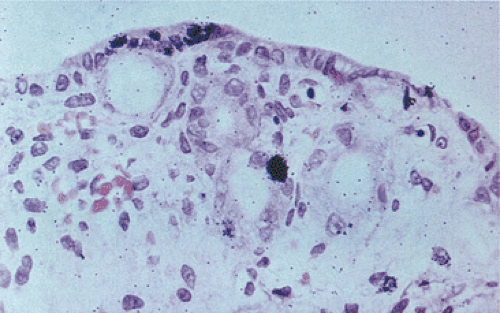Gross Features
The human small intestine, which extends from the gastric pylorus to the ileocecal valve, measures about 7 m in length. The C-shaped duodenum encloses the head of the pancreas in its concavity. It measures approximately 20 to 25 cm in length and, except for its first part, lies in the retroperitoneum. The first part of the duodenum measures approximately 5 cm in length, and it ascends posteriorly from the pylorus to the right. It lies above and anterior to the head of the pancreas, below the gallbladder, and anterior to the common bile duct, gastroduodenal artery, and portal vein. The second portion measures approximately 7 cm in length and is covered by the peritoneum of the infracolic compartment of the peritoneal cavity, which separates it from coils of the small bowel. The transverse colon and its mesentery cross it. The hilum of the right kidney and right renal vessels lie behind it, and the bodies of the lumbar vertebrae and inferior vena cava lie medially.
The common bile duct and pancreatic duct enter the second part of the duodenum posteromedially at the ampulla of Vater approximately 9 to 10 cm from the pyloric ring (Fig. 6.7). In most patients, the common bile duct and pancreatic duct join before draining into the ampulla (Fig. 6.8), but in about 10% of cases, the bile duct and pancreatic duct open separately into the intestinal lumen. In about 30% of patients, an accessory, more proximal pancreatic duct drains into the duodenal lumen. Both the bile duct and the pancreatic duct have their own muscular coats. A cross section through this area of the duodenum contains numerous ramifying ducts in all layers of the duodenal wall (Fig. 6.9). The sphincter of Oddi at the ampulla of Vater measures approximately 9.5 mm in length (32).
Stay updated, free articles. Join our Telegram channel

Full access? Get Clinical Tree









